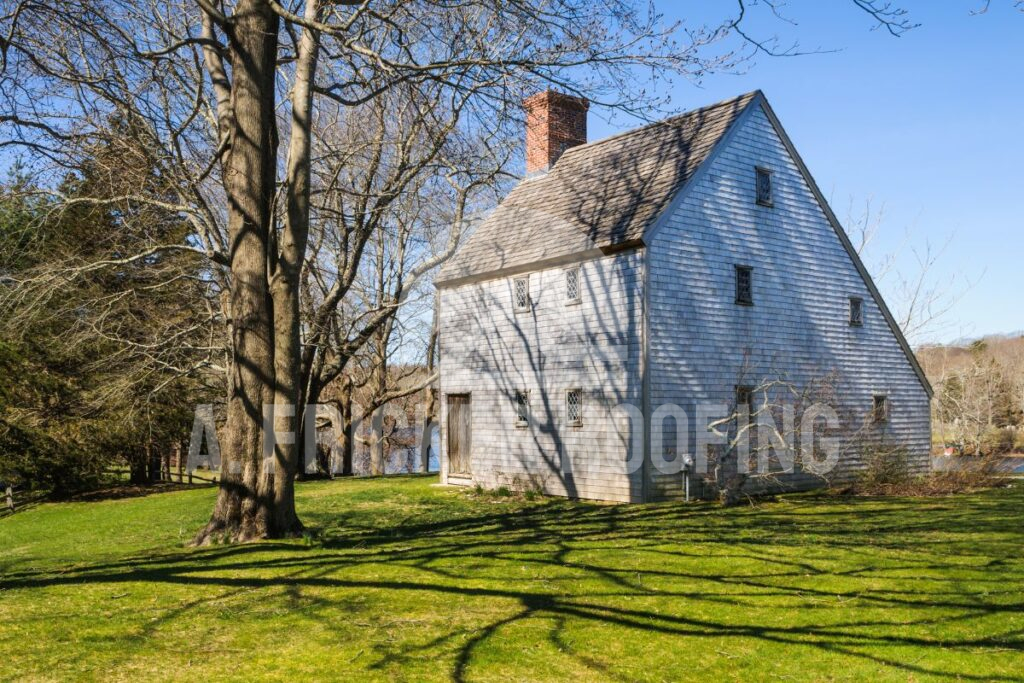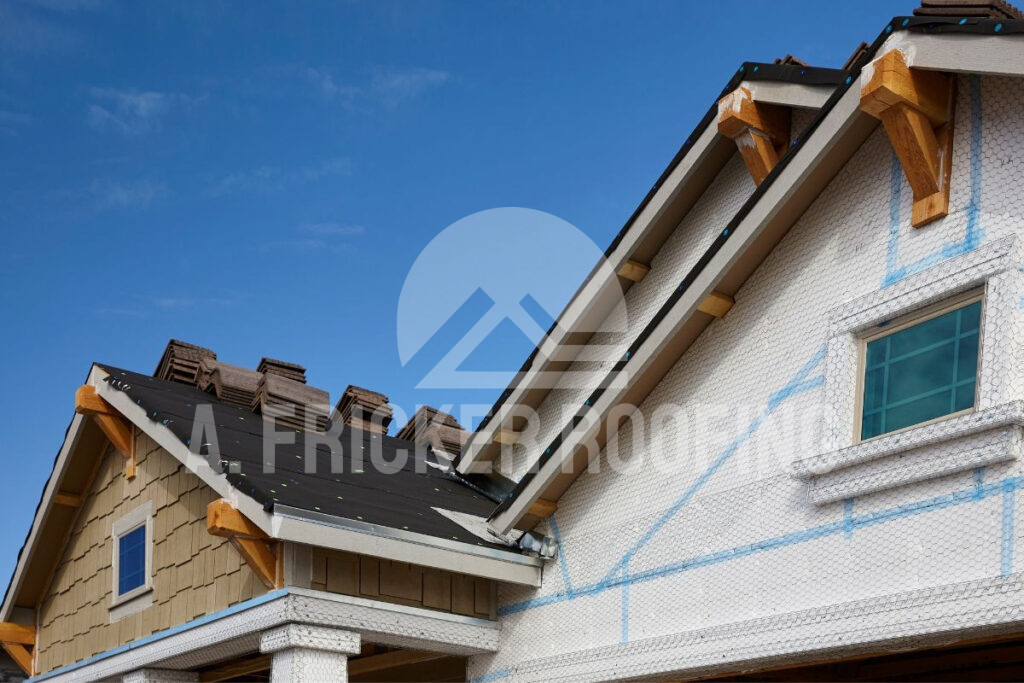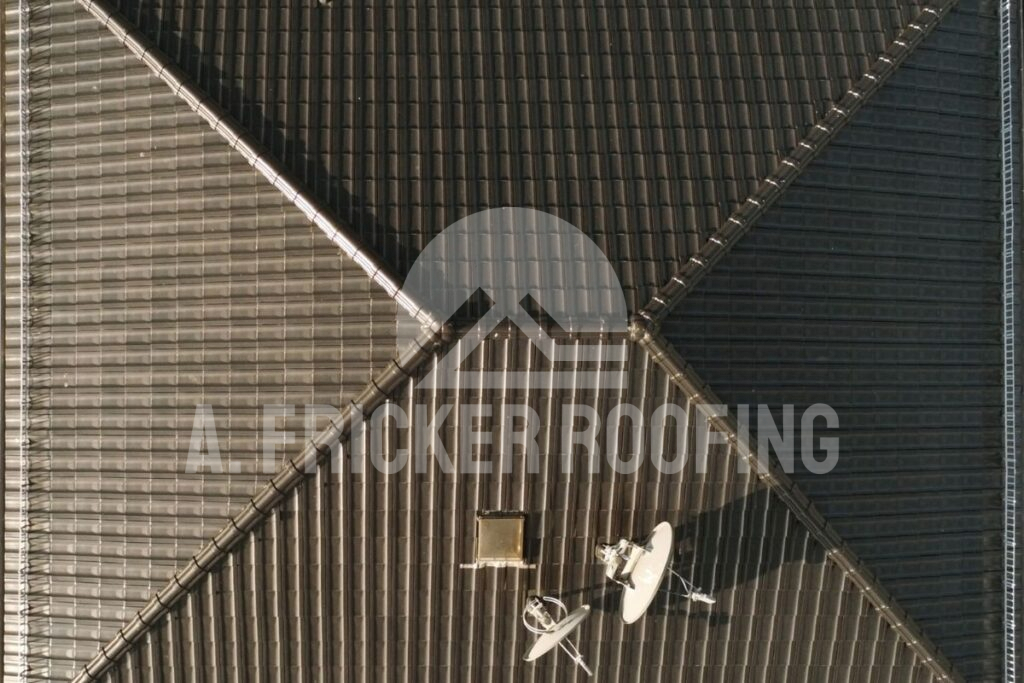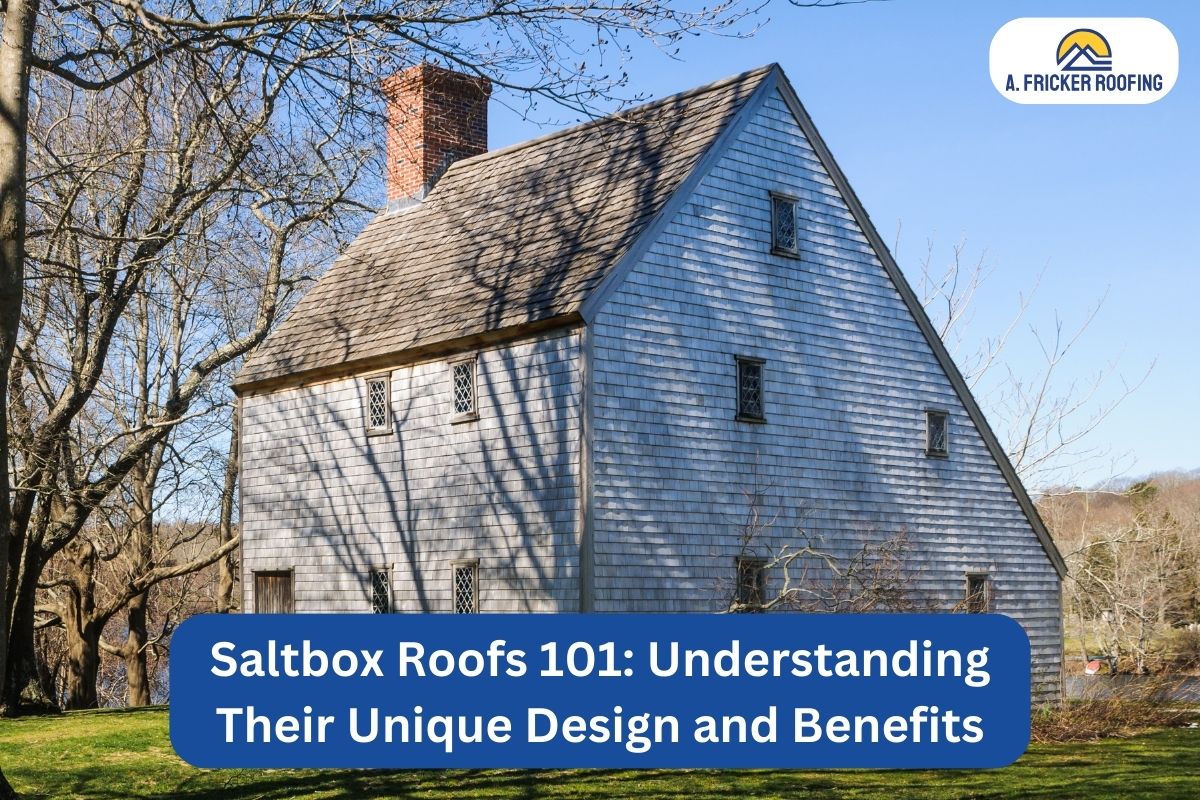Just as an umbrella protects you from rain, a roof shields a house from the elements. Among the various styles, the saltbox roof, with its long, sloping shape, stands out as a unique blend of practicality and aesthetics.
Its roots in colonial New England showcase a design that’s not only survived but thrived through centuries of architectural evolution. But what’s the secret behind its longevity and continued appeal? Stick around as we discuss everything you need to know about this classic roofing style.
Understanding the Unique Style of Saltbox Roofs

Known for their durability, these roofs have a long, sloping design that’s highly resistant to harsh weather, giving them a significant edge against roofs with flatter slopes.
At first glance, the saltbox construction might seem odd with its uneven design. But it’s not all about function. The aesthetics of a saltbox roof are also something that homeowners often find charming. Its asymmetrical design provides a unique, historical charm that’s hard to ignore.
Moreover, the roof aesthetics aren’t just about looking good, they also bring structural advantages. This design is a product of colonial influence and was born of necessity. The steep slope allows for easy shedding of rain and snow, and the design creates extra living or storage space. Alongside this, the design promotes energy efficiency, as its slope allows for optimal insulation, keeping your home warm in winter and cool in summer.
Lastly, one aspect homeowners love about saltbox roofs is their potential for customization. With a saltbox roof, you can tailor the design to suit your home’s style or personal preferences.
History of Saltbox Roofs
Diving into the history of saltbox roofs, their origins rooted in 17th century New England. Strongly influenced by colonial architecture, these roofs were designed based on the shape of wooden boxes that stored salt in kitchens. They showcased an evolution in roof design, moving away from traditional styles to better suit the harsh New England weather.
The unique, long, sloping design of the saltbox roof allows for extra living or storage space. As time passed, variations of the saltbox roof emerged, adding to the popularity of this roof design. These variations, while maintaining the basic saltbox design, often included additional features like dormer windows.
Architectural Features of Saltbox Roofs
Known for its durability, functionality, and charm, the saltbox roof design is a testament to resilience. The material choices often include long-lasting options like wood or slate, enhancing the roof’s durability. This also contributes to the aesthetics of a saltbox roof, creating a unique combination of simplicity and strength.
However, the interior space can be a bit tricky, with the rear slope creating challenges in terms of room design. Still, this same slope can also be an asset, offering an additional floor of living space. Despite these challenges, the saltbox roof remains a beloved architectural feature, offering a blend of history, durability, and charm.
Modern Applications of SaltBox Roofs
While the saltbox roof design has deep historical roots, it’s becoming a staple in modern architecture due to its unique aesthetics and durability. Today’s architects often incorporate the saltbox shape into their innovative designs, creating structures that are extremely stable yet stand out. This modern adaptation of the saltbox roof also allows for creative use of the upper space, leading to various saltbox conversions, such as lofts and additional living areas.
Should You Install a SaltBox Roof?
Having considered the modern applications and benefits of saltbox roofs, you might now be wondering if it’s the right choice for your home.
Their durability is a selling point, as these roofs are known to withstand harsh weather conditions. While the installation costs may be higher compared to more traditional roofs, the longevity and low maintenance of saltbox roofs offset these initial costs. In terms of climate suitability, saltbox roofs excel in areas with heavy rainfall or snow, as their steep slope allows for efficient water runoff.
Beyond functionality, saltbox aesthetics add a unique look to any home. However, the implications for interior space can be challenging. The uneven shape may result in less living space upstairs, requiring creative interior design solutions.
Alternative Options To Saltbox Roofs
But if a saltbox roof isn’t for you, there are alternatives that incorporate the design’s best features without the extreme slope. However, for a perfect blend of form and function, you can’t beat a saltbox roof.
1. Gable Roofs

Gable roofs, with their triangular shape, are a timeless and widely popular choice. Their symmetrical design lends a sense of balance to a home, making them a versatile option that complements various architectural styles. Gable roofs are particularly well-suited for areas with moderate weather conditions.
One of the practical advantages of gable roofs is their excellent ventilation properties. The flat gable ends of the roof often feature vents, contributing to a more energy-efficient and comfortable living environment.
2. Hip Roofs

Different from gable roofs, hip roofs feature slopes on all four sides, converging at a central ridge. This design not only provides stability but also enhances the overall durability of the roof. Hip roofs are an excellent choice for areas prone to high winds or storms.
The versatile design of hip roofs allows for various architectural expressions. Whether you prefer a modern, minimalist look or a more traditional aesthetic, hip roofs can be adapted to suit your vision.
Also Read: Comparative Guide on Hip vs. Gable Roof
3. Mansard Roofs
Mansard roofs, characterized by a double slope on all four sides, offer a unique blend of style and functionality. The steep lower slope provides ample living space or storage within the attic, making it a popular choice for those looking to maximize interior square footage.
Originally popularized in 17th century France, mansard roofs continue to be associated with elegance and sophistication. Their distinct profile adds a touch of architectural flair to any home.
4. Butterfly Roofs
For those with a taste for modern design, butterfly roofs present a compelling option. This inverted V-shaped design creates a visually striking balance, often associated with mid-century modern architecture. Butterfly roofs allow for large windows, maximizing natural light and creating a seamless indoor-outdoor connection.
Do SaltBox Roofs Require More Roofing Material To Install?
People often wonder if saltbox roofs require more roofing material to install compared to other roof types. Due to their unique design, these roofs can be a bit more demanding in terms of material selection and quantity.
The cost implications, as you might guess, are a bit higher, given the increased amount of material required. The installation complexity also adds to the cost. However, it’s worth noting that although the upfront investment may be higher, the longevity comparison to other roofs is favorable. Saltbox roofs are known for their durability, and in the long run, they can prove to be a cost-effective choice.
Maintenance Requirements For SaltBox Roofs
Despite their durability, saltbox roofs require some regular maintenance to keep them in optimal condition. Material longevity is tied to how well you care for your roof. Regular inspections, at least twice a year focusing on leak prevention and identifying potential weather damage, are crucial.
It’s important to address any signs of wear and tear promptly. If you spot a leak, for instance, don’t hesitate to call in a professional for repairs. This approach not only saves you from a costly replacement down the line but also ensures your saltbox roof remains sturdy and aesthetically pleasing year-round.
Conclusion
Saltbox roofs aren’t just steeped in history, they’re also functional and long lasting. They offer unique architectural character, efficient use of space, and durability against harsh weather. Yes, they may need more roofing material, but the benefits often outweigh this minor drawback.
Overall, the choice to install a saltbox roof should be based on your style preference and the specific needs of your home.
Contact Professional Roofers To Install Your Roof In Tulsa, OK
When it comes to ensuring a secure and aesthetically pleasing roof for your home in Tulsa, OK, the professionals at A. Fricker Roofing and Waterproofing have got you covered. Our skilled roofers are proficient in installing various types and styles of roofs, including saltbox roofs, gable roofs, and hip roofs.
Contact us today at (918) 402-7167 to schedule a consultation with our professional roofers. We are dedicated to providing top-notch roofing solutions tailored to your unique needs.

